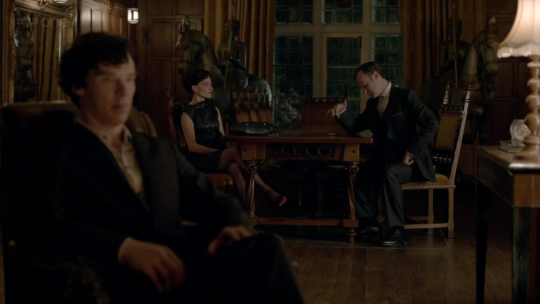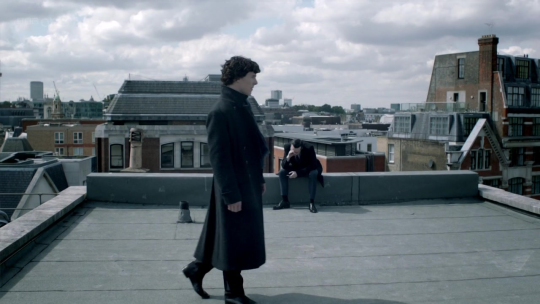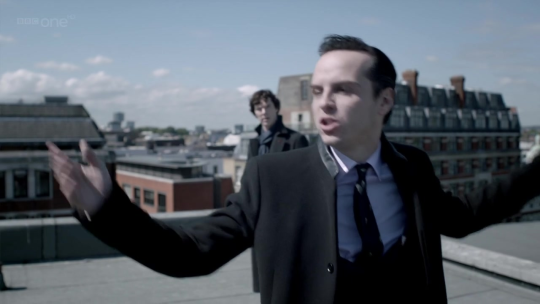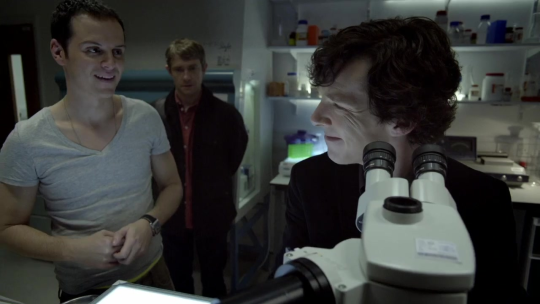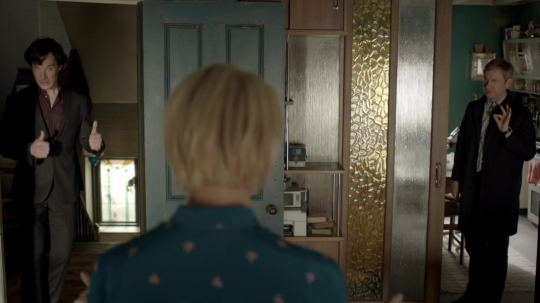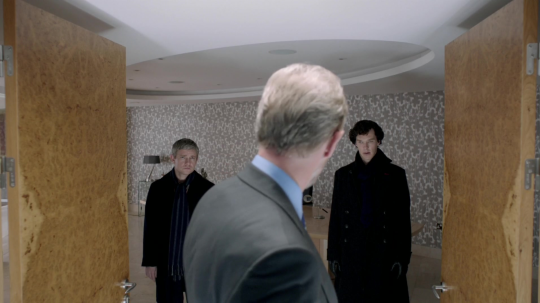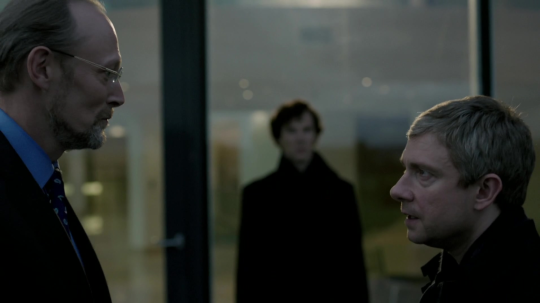Power Placement
Who’s ready for some more discussion on cinematography in BBC Sherlock! (if you have no idea what I’m referring to, check out my other metas.)
So I’m finally taking my first film class (woo-hoo!) and this week we’ve been talking about how where you position characters within the camera frame can have an impact on how you tell a story. Namely, who is on the winning or losing side, who’s brave or scared or weak… and perhaps most intriguing, who holds the most power over others.
Technically speaking power placement isn’t cinematography, but technically I don’t care, so let’s dive in:
A general rule is that when you have a scene where multiple characters are all in the frame, the character closest to the camera/audience is the most powerful and the one farthest back in the weakest in that situation. In some movies like the much-lauded Citizen Kane, the entire movie is about characters physically jockeying for position within the story world. It’s almost like setting a stage.
When we apply this to BBC Sherlock we get stuff like this:
Now if we’re just listening to the first part of this scene, we’d think that Irene was winning, right? But if we pay attention to how the characters are laid out, Sherlock is in front, far enough forward to seem a world away from the other two and blurry (we don’t know his thoughts). Sherlock sitting out in front tells a watchful viewer that he will eventually triumph.
Of course, for most of the show we simply view characters over other’s shoulders or bounce around from different angles, but sometimes this concept of positioning characters to hint at who is (at least temporarily) in charge brings out some really interested results:
The whole rooftop scene is a merry-go-round of who thinks they have the upper hand.
Jim trying to win attention and power over John, leaving Molly’s side where he used to stand in the background. But Sherlock makes the ultimate decision of not giving a fuck.
Another thing I’ve noticed is that if the character with the most power has their back turned it often means they hold an unspoken or underhanded power. In other words, not what they seem, or perhaps a hint at something ominous.
*ahem*
You might think this is an exception but at this point Sherlock is actually helpless, and the tension is between the taller CAM and the shorter John. It’s only later that Sherlock walks up to stand near John, and then walks forward to CAM, who is way out front and very confident.
I’m sure there’s plenty more, but I just find it interesting that in scenes where a lot of powerful/dangerous people are involved, the characters must physically fight for power over the other, not just in a battle of wits.
Dutch Angles // Low Angles // Top Shots
(tags under the cut)
This is very good. It will help a lot for S4. That part “…an unspoken or underhanded power…” Reminds me of the Magic world and what they call that The Reveal or The Prestige. This jogged my memory of this post from @cinnkegan John chose sherlock not mary which might tie in.
Ooh, yes I forgot about that scene. Also a very good example: John is at the center and Mary in the background as she doesn’t hold much power at that point. And of course Mrs. Hudson in the very back as she has no idea what is going on.
XistentialAngst's Blog
- XistentialAngst's profile
- 15 followers


